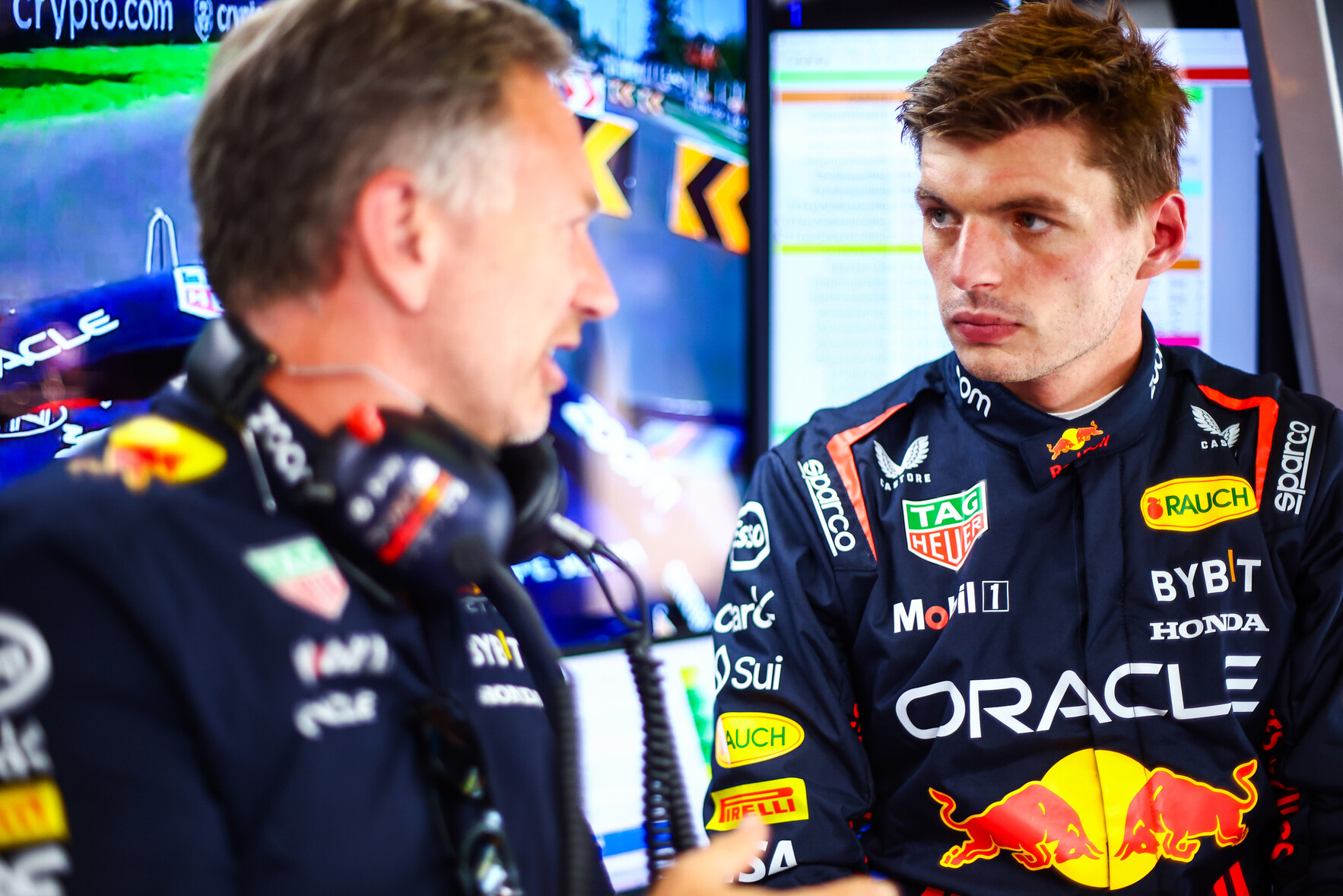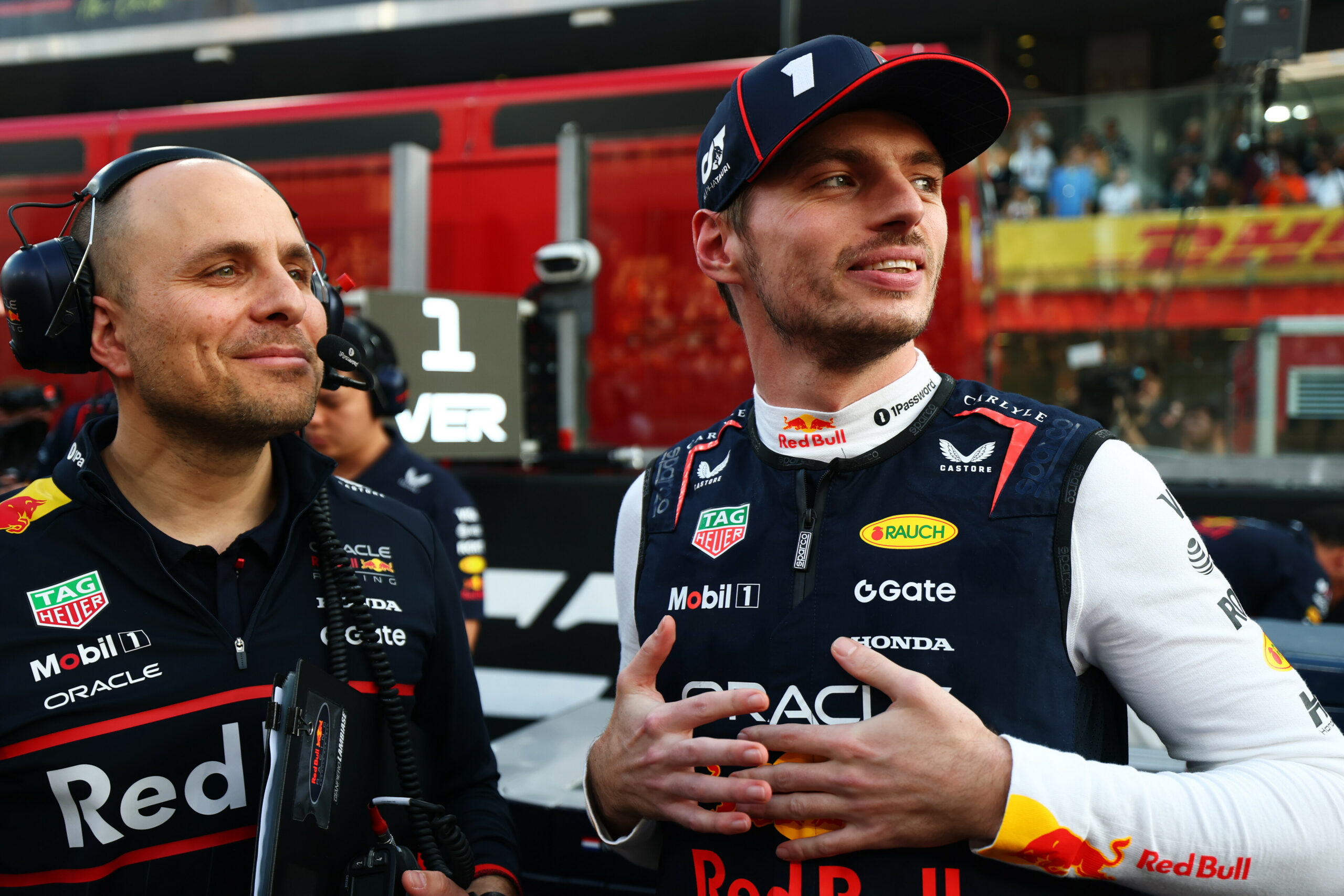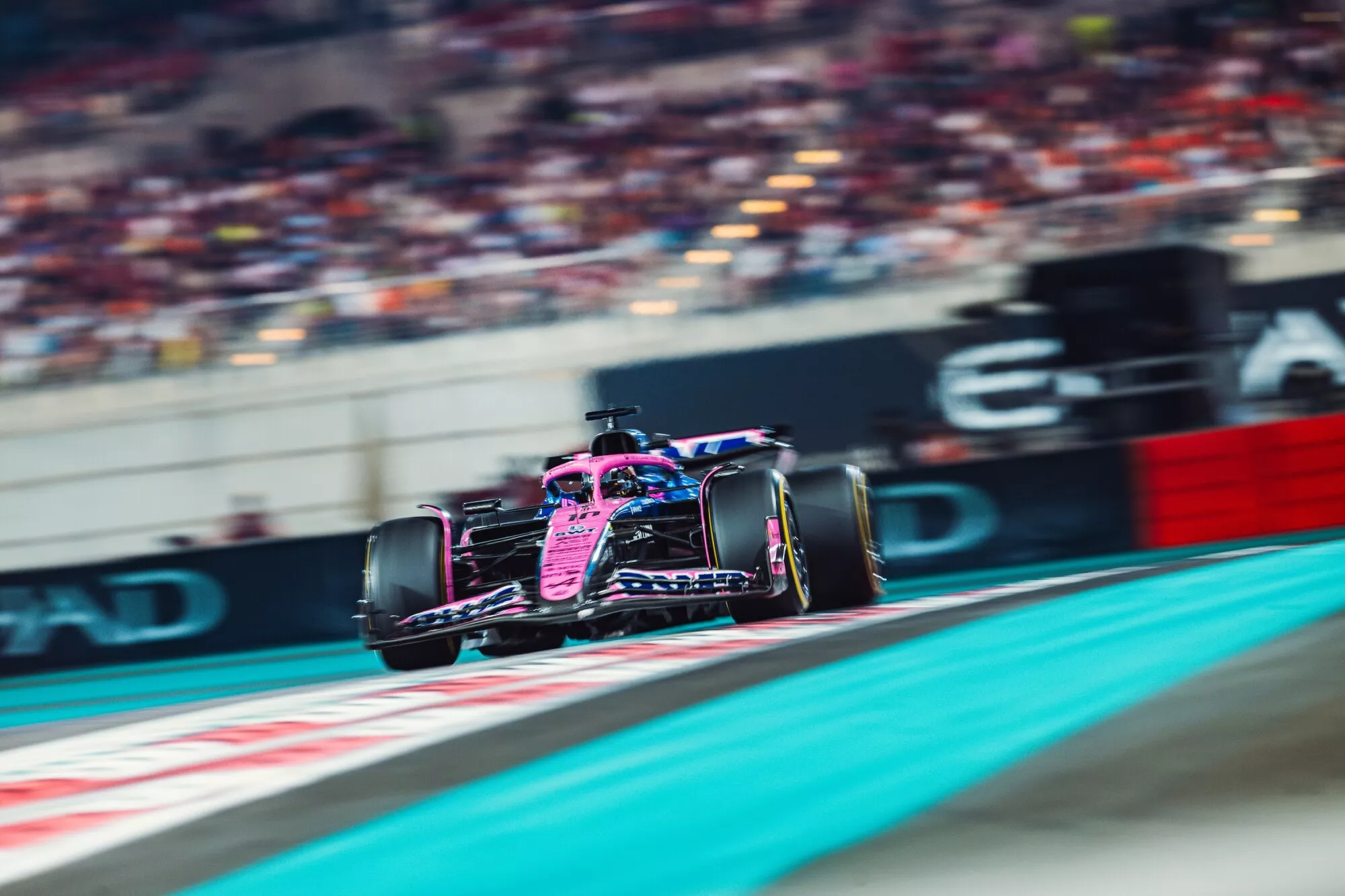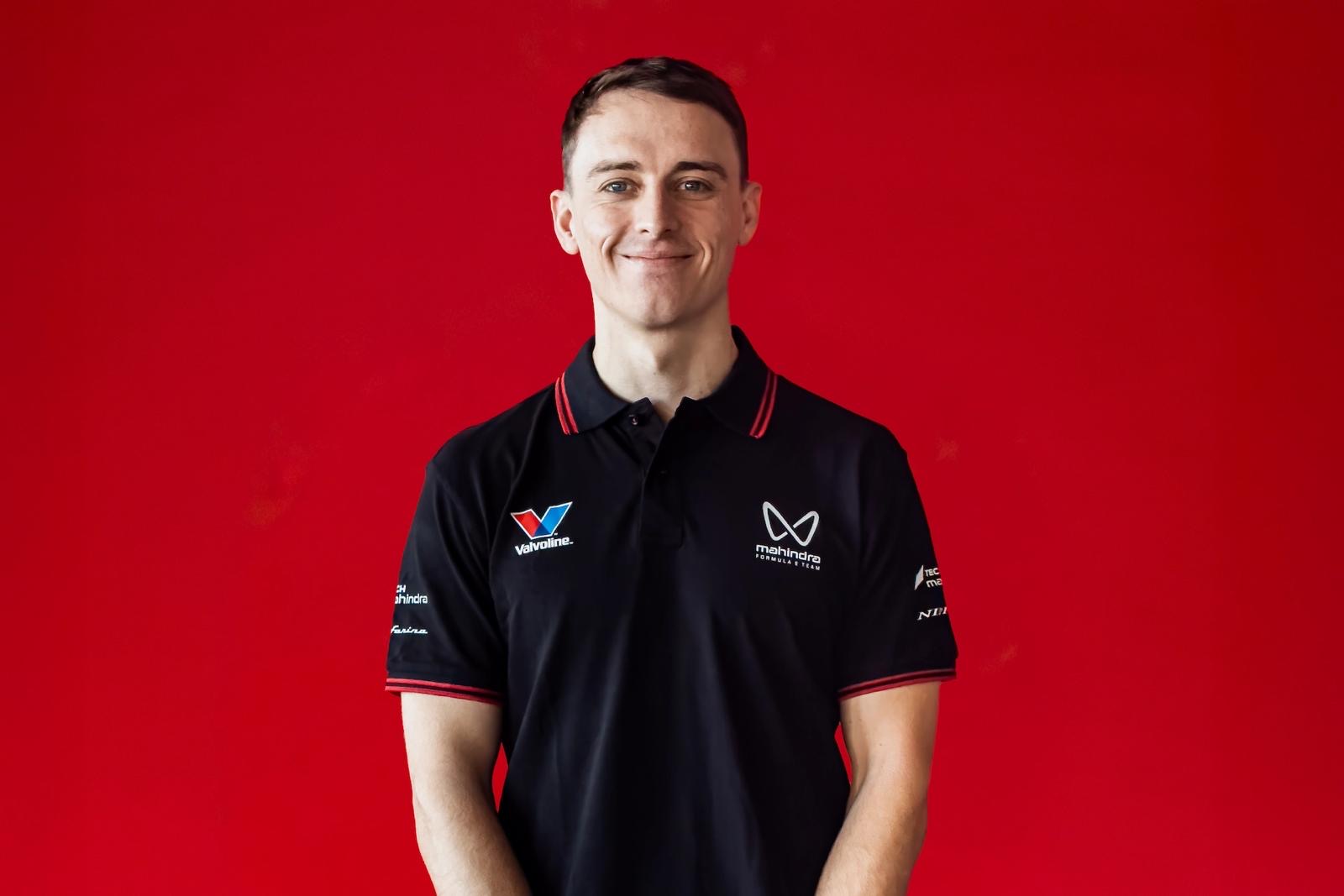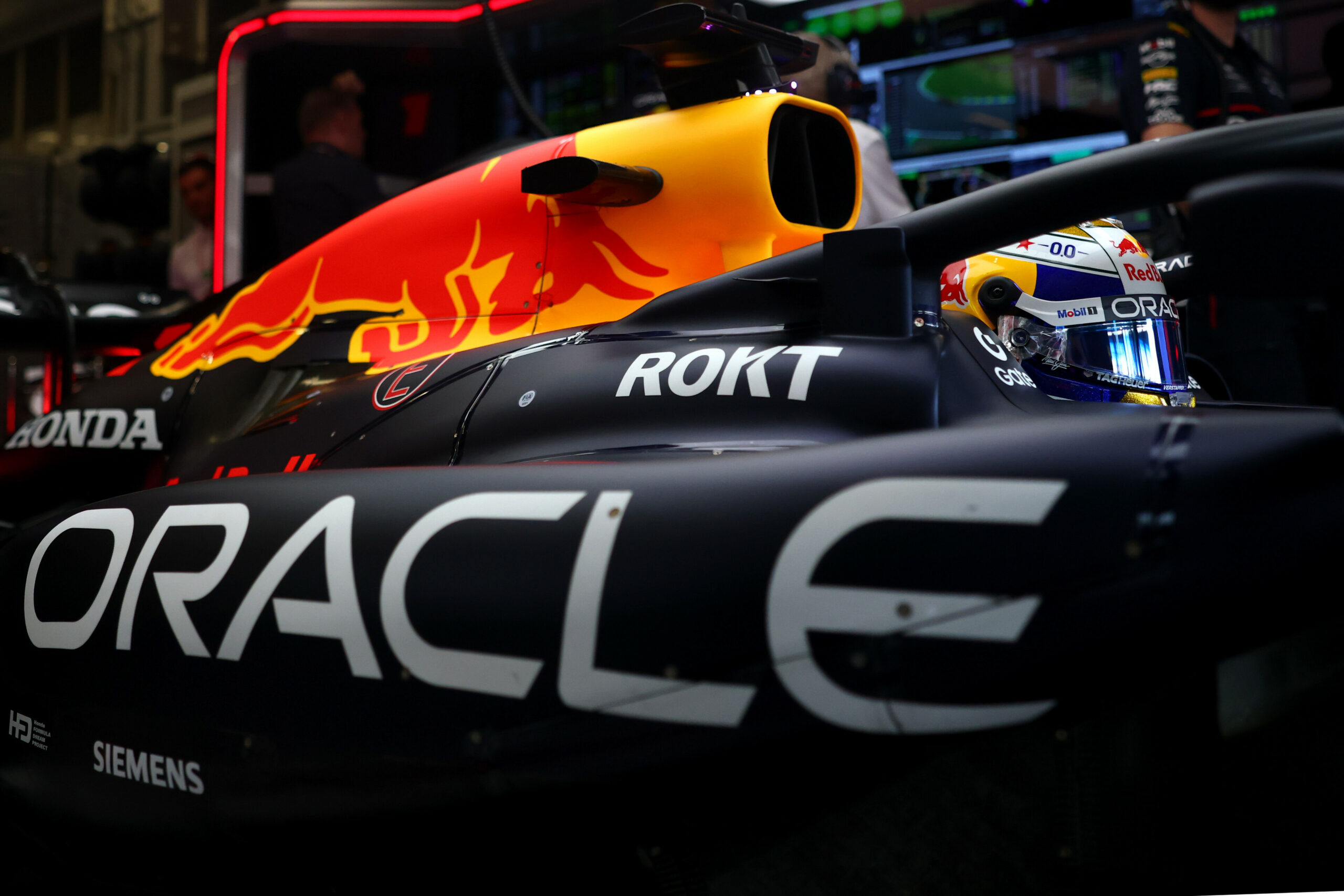Christian Horner has acknowledged that Red Bull must urgently address their issues following a disappointing performance at the Italian Grand Prix.
Heading into the 2024 season, Red Bull’s period of dominance looked set to continue, with defending champion Max Verstappen taking wins at seven of the first ten races. However, their performance has been in decline since the summer rounds, forcing the team into damage limitation mode.
Qualifying at Monza set a troubling tone for the remainder of the weekend, as Verstappen and Perez qualified 7th and 8th respectively, amid complaints about understeer. The car’s performance in race trim was equally disappointing, which—coupled with an engine issue and a six second pit stop—left Verstappen 6th at the flag.
He offered a damning assessment after the race, calling the RB20 in its current state “undriveable” and saying that, “at the moment both championships are not realistic.”
Verstappen is still sitting at the top of the Drivers’ standings, but the lead he established early on in the season is rapidly melting away with each race weekend as Red Bull faces mounting pressure from a resurgent McLaren, meaning it could be touch and go in the final rounds.
Speaking after the Italian Grand Prix, Horner remarked: “With the pace that we had today, both championships absolutely will be under pressure for sure. So we have to turn the situation around very quickly.
“I think this circuit has exposed the deficiencies that we have in the car versus last year. And I think that we have a very clear issue which has been highlighted this weekend, that we know we have to get on top of and address.
“(…) Nobody puts themselves under more pressure than ourselves because finishing 6th hurts and the reality was Ferrari helped us out a little bit today, as did the fighting between the two McLaren drivers, otherwise in the Drivers’ Championship, there could have been another chunk of points taken out of us.”
Echoing Verstappen’s comments, Horner conceded that RB20’s balance issue is performance-sapping.
“I think 100% it’s balance,” he said. “We haven’t got a connection between front and rear. Max can’t lean on the rear on the way into the corner, or Checo. And you then end up compensating for that. Then you create understeer, and it’s on such a fine line.
“You could see it in qualifying—on a scrub tyre with a balance, we could do a 19.6 that matched the best times. Then we put two new sets of tyres on, the balance is then completely out and we go four and half tenths slower.
“I think on other [tracks], running more downforce perhaps hides some of the balance issues that we have, and you can see that we’ve got a disconnection in balance that just isn’t working,” he continued.
“And as soon as you end up in that situation, you’re harder on tyres, you end up compensating, you move the balance around—to cure one problem you create another, so you just end up in a vicious circle.”
Horner noted that the issue was detectable as early as Austin last year, but remained dormant until Red Bull began intensifying their upgrade efforts this season in an attempt to stay competitive as the development war ramped up.
“I think it’s been there for some time. I think actually, really going through the data, there were issues there at the beginning of the year in the characteristics. I think others have obviously made a step, and as we’ve pushed the package harder it’s exposed the issue.
“So even if you go back in the data, there were a few races last year where we started to see this, [for example] in Austin. I think it’s a characteristic we have to address, and there’s full focus at the factory in Milton Keynes to do that.”
He acknowledged that the coming weeks will be crucial for their faltering title bid.
“The most important thing is understanding the issue. There are certain fixes that potentially can be introduced, perhaps not to resolve the whole issue but to address some of it. We’ve now got a two week period before Baku and Singapore and then we have another mini-break that we can work in between Singapore and Austin, so this time now is crucial.”
Horner believes that correlation issues between the team’s development tools and the RB20’s on-track performance are largely to blame.
“There were some of these issues early in the year, even when we were winning races by 20 seconds. I think the recent upgrades, whilst they’ve put load, it’s disconnected front and rear. (…) We’ve hit the ceiling in certain areas and the car is disconnected.
“We can see that—our wind tunnel doesn’t say that but the track says that. So it’s getting on top of that because obviously when you have that it means you can’t trust your tools, so then you have to go back to track data and previous experience,” Horner explained.
“The [performance] swing is very quick and that’s something we haven’t experienced before so quickly. But the fact it can swing so quickly one way, it can swing back the other way as well.
“You’ve got to look at all aspects of the car. (…) If you look at the McLaren, it almost looks like an evolution of last year’s car. A much simpler car than ours. Perhaps we’ve gone a little too complex and perhaps we need to simplify a few things.”
He asserted that Adrian Newey’s departure is not related to Red Bull’s technical decline.
“One man’s input could never be dramatic so quickly…[This issue] started to really highlight itself in Miami, and Adrian was plugged in up until Friday of Miami, so there’s no way it would have impacted [us] so quickly.
“Formula 1 is a team sport. It’s a team issue, and the team will come up with a resolution.”

